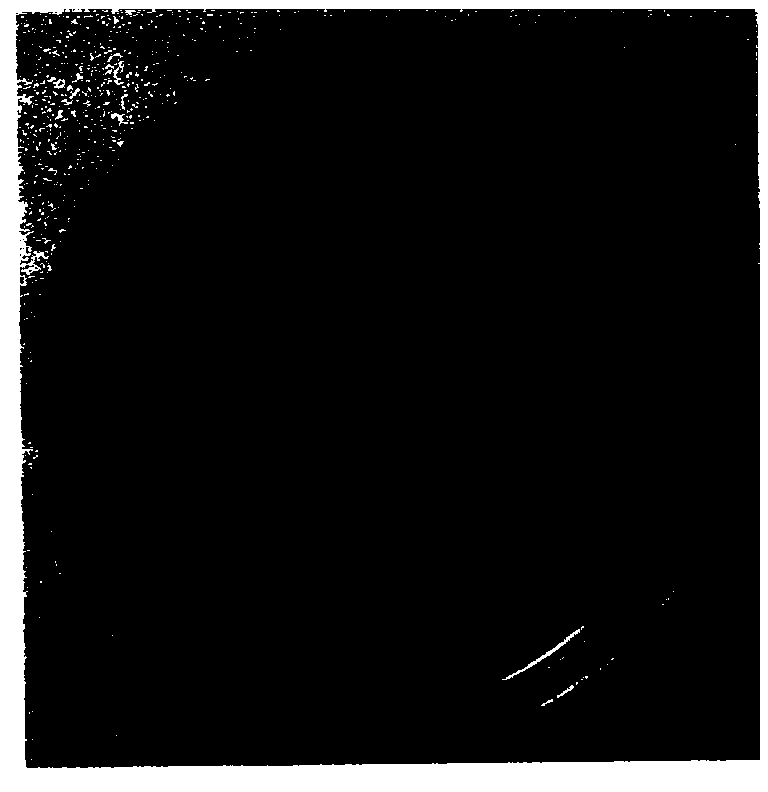Antagonistic bacteria for prevention and treatment of tobacco bacterial wilt and application thereof
A technology of tobacco bacterial wilt and antagonistic bacteria, applied in the direction of application, bacteria, fungi, etc., can solve the problems that crop rotation measures cannot be realized, the control effect is not ideal, and the impact is relatively large
- Summary
- Abstract
- Description
- Claims
- Application Information
AI Technical Summary
Problems solved by technology
Method used
Image
Examples
Embodiment 1
[0038] Embodiment 1, isolation and screening of tobacco bacterial wilt antagonistic bacteria
[0039] 1) Isolation of pathogenic bacteria
[0040] Before isolating the bacteria, rinse the tobacco rods clean, then use 75% alcohol to disinfect the tobacco rods and the knife, and then use a knife to cut open the lesion on the stem of the tobacco plant under aseptic conditions, and remove the vascular tissue of the susceptible part. Cut into several small pieces, pick up the cigarette pieces with sterilized tweezers and put them into the beef extract peptone bacterial plate culture dish for cultivation, put 5 pieces in each dish, repeat 3 dishes, the cultivation temperature is 32°C, and the cultivation time is 48h. White fluid colonies grow and disperse fine bacteria outwards when the bacterial wilt cigarette block contacts with the medium, and inoculate it in beef extract peptone for preservation.
[0041] The micrographs showed that bacterial wilt pathogen was rod-shaped, blunt...
Embodiment 2
[0056] Embodiment 2, morphological observation
[0057] The initial colony of QJ-1 bacteria is flat, milky white, smooth and opaque.
[0058] The initial stage of Ty-3 bacteria is white hyphae, and then produces dark brown or dark brown spores, which are abundant.
Embodiment 3
[0059] Embodiment 3, identification and classification of antagonistic bacteria
[0060] The results identified by the Institute of Microbiology, Chinese Academy of Sciences are:
[0061] 1. QJ-1 is Bacillus cereus.
[0062] 1) Cell morphology and physical and chemical test results
[0063] Gram-positive, the cells are rod-shaped, the cell diameter is greater than 1 μm, spores are formed, and the spores do not expand; VP test, methyl red test, starch hydrolysis, casein decomposition, gelatin hydrolysis, catalase, oxidase, nitrate reduction reaction , Utilization of citrate were positive; acid production reaction performance: glucose positive, xylose, L-arabinose, mannitol, lactose negative.
[0064] 2) 16S rRNA gene sequence determination results
[0065] GCAGTCGAGC GATGGATTAA GAGCTTGCTCTTATGAAGTTAGCGGCGGAC
[0066] GGGTGAGTAA CACGTGGGTA ACCTGCCCAT AAGACTGGGA TAACTCCGGG
[0067] AAACCGGGGC TAATACCGGA TAACATTTTG AACTGCATGG TTCGAAATTG
[0068] AAAGGCGGCT TCGGCTGCCA CTTATGG...
PUM
 Login to View More
Login to View More Abstract
Description
Claims
Application Information
 Login to View More
Login to View More - R&D
- Intellectual Property
- Life Sciences
- Materials
- Tech Scout
- Unparalleled Data Quality
- Higher Quality Content
- 60% Fewer Hallucinations
Browse by: Latest US Patents, China's latest patents, Technical Efficacy Thesaurus, Application Domain, Technology Topic, Popular Technical Reports.
© 2025 PatSnap. All rights reserved.Legal|Privacy policy|Modern Slavery Act Transparency Statement|Sitemap|About US| Contact US: help@patsnap.com



